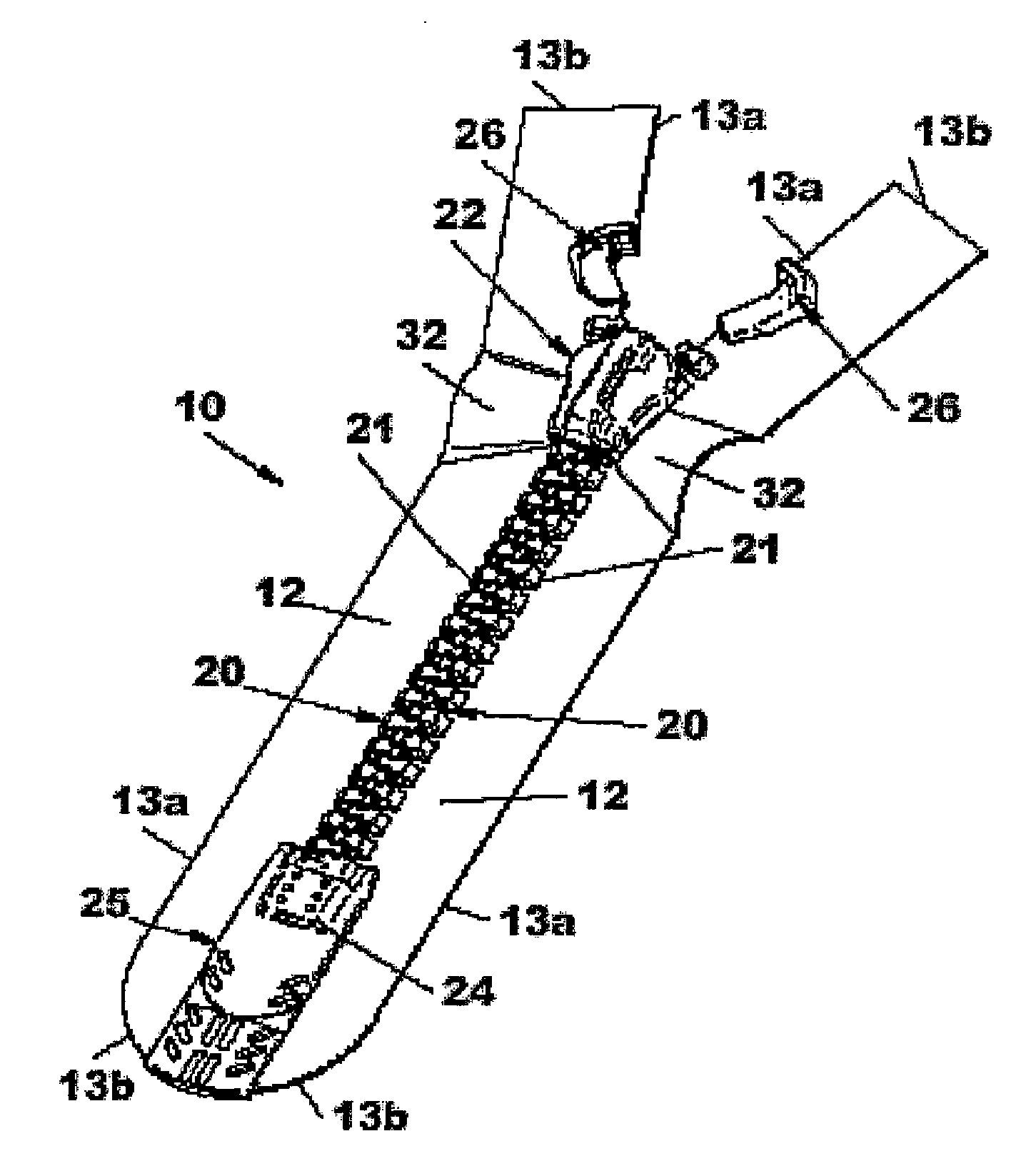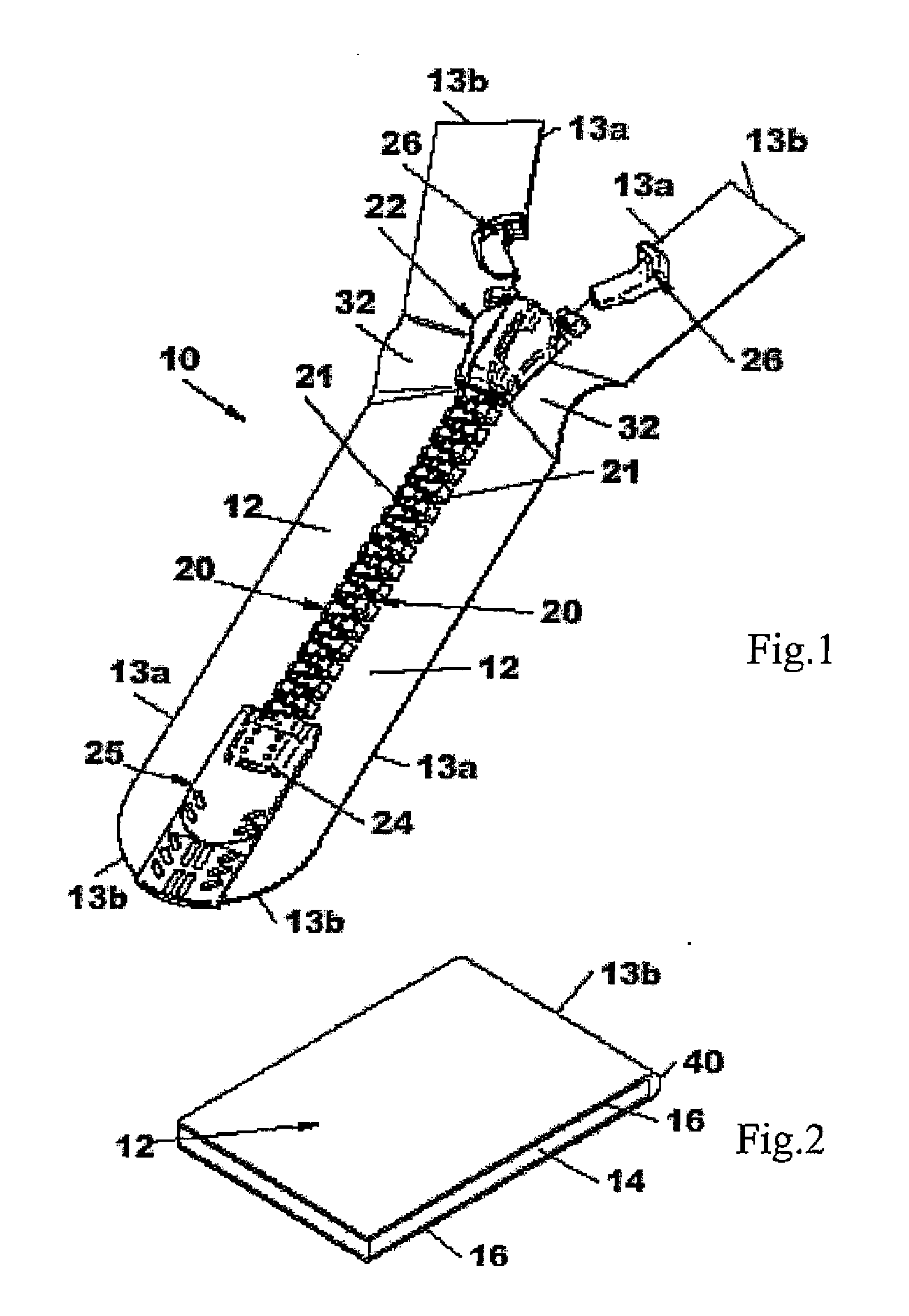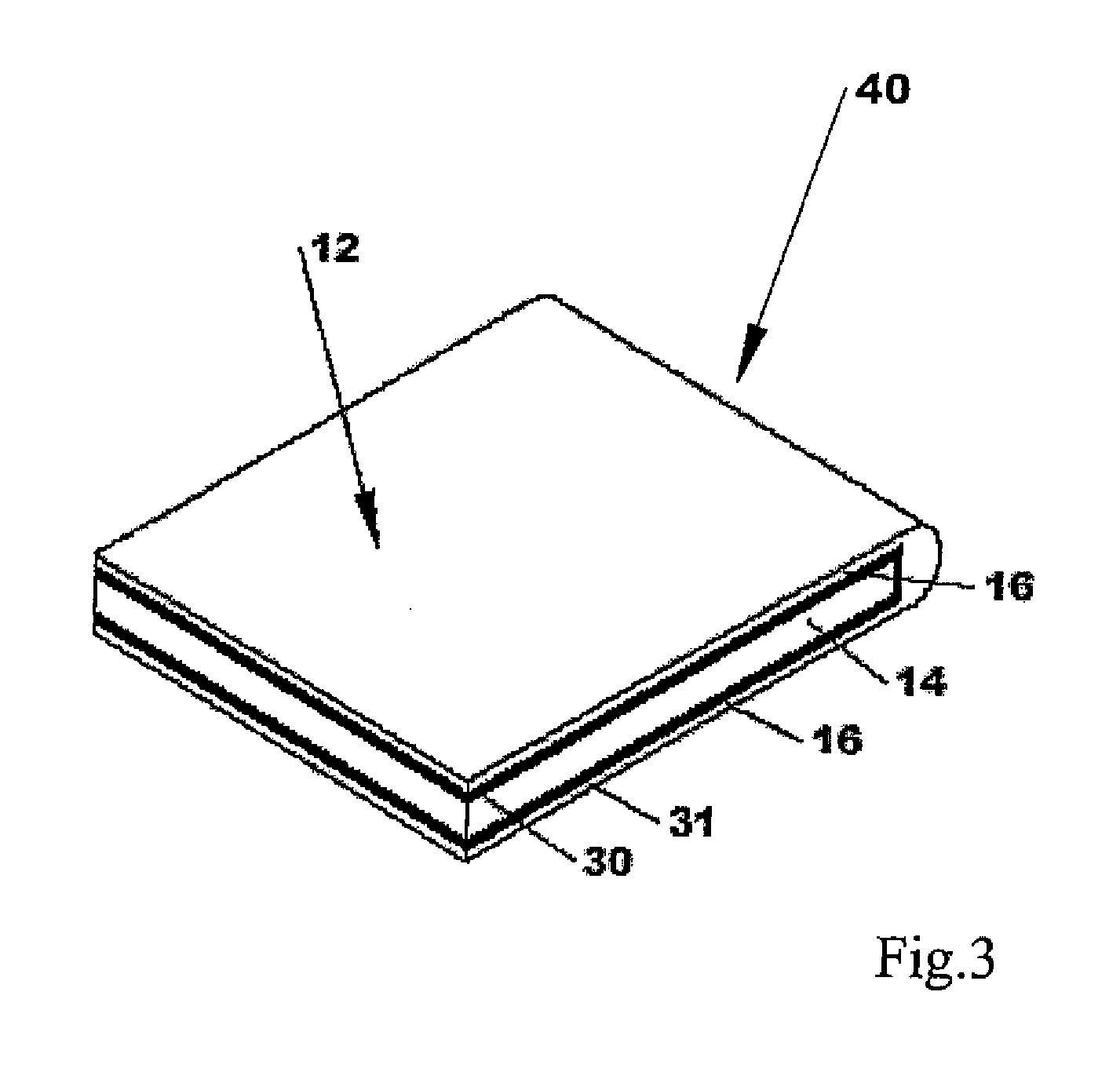Fluid-Tight Slide Fastener
a slide fastener and fluid-tight technology, applied in the field of sliding fasteners, can solve the problems of tape weakening, slide fasteners tapes that do not always show satisfactory mechanical properties, etc., and achieves stronger coupling, and improved resistance to delamination.
- Summary
- Abstract
- Description
- Claims
- Application Information
AI Technical Summary
Benefits of technology
Problems solved by technology
Method used
Image
Examples
example 1
[0068] Strips of PE fibers were fully coated with a layer of fluid-barrier material (a TPE-U material) by means of a conventional extrusion head. The extrusion of the fluid-barrier material from said head was performed in a conventional way according to the procedure suggested by the manufacturer.
[0069] The coated strips were then equipped each with a plurality of rows of aligned teeth along a longitudinal edge thereof, said rows being set at a predetermined distance to each other. The teeth were each made from a blend of ABS and PA. The teeth application was performed by injection overmolding the teeth material onto said longitudinal edge of the coated strips in a conventional way (according to the procedure suggested by the manufacturer). The coated strip equipped with said rows of aligned teeth were then heat cut transversally along consecutive rows of aligned teeth to obtain a plurality of tapes of the same dimensions, wherein each tape was equipped with a row of aligned teeth....
example 2
[0080] A plurality of slide fasteners were manufactured using the same procedure disclosed in example 1. However, in this example, the fluid barrier material covering the strips of textile material was made of TPE-E including yellow pigments and the material for the teeth was PBT.
[0081] The slide fasteners so obtained were tested for their resistance to delamination of the layered structure of the tapes using the same procedure discussed above in example 1. However, in this example, all samples according to the invention to be tested were engraved substantially at the same position on the tape surface.
[0082] The results are shown in the following table 2 as a mean of minimum load values obtained from tested samples.
TABLE 2Minimum load (in Kg) necessary to obtain delaminationAfterAfterAfterAfterAfterBefore1st2nd3rd4th5thwashingwashingwashingwashingwashingwashingSamplescyclescyclecyclecyclecyclecycle1.51.31.31.21.01.0
[0083] As can be seen from the above table 2, the slide fastener...
example 3
[0087] In this example, slide fasteners were prepared by using an adhesive for bonding the layers of the tapes.
[0088] In particular, it was carried out a variant of the procedure discussed above in example 1 according to which an adhesive layer (polyurethane resin) was first applied on the opposite surfaces of strips of PE, by soaking the strips in an adhesive dispersion, and then the strips provided with the adhesive were covered with a TPE-U fluid-barrier layer according to the procedure of example 1.
[0089] The procedure of example 1 was also followed after coating the strips, thereby obtaining a plurality of slide fasteners which were tested for their resistance to delamination of the layered structure of the tapes.
[0090] It was found that, thanks to the presence of adhesive in-between, the fluid-barrier layer and the textile layer of the respective tape were bonded extremely strong to each other and as a result no delamination of such layers was observed both before and after...
PUM
| Property | Measurement | Unit |
|---|---|---|
| Weight ratio | aaaaa | aaaaa |
| Distance | aaaaa | aaaaa |
| Thermoplasticity | aaaaa | aaaaa |
Abstract
Description
Claims
Application Information
 Login to View More
Login to View More - R&D
- Intellectual Property
- Life Sciences
- Materials
- Tech Scout
- Unparalleled Data Quality
- Higher Quality Content
- 60% Fewer Hallucinations
Browse by: Latest US Patents, China's latest patents, Technical Efficacy Thesaurus, Application Domain, Technology Topic, Popular Technical Reports.
© 2025 PatSnap. All rights reserved.Legal|Privacy policy|Modern Slavery Act Transparency Statement|Sitemap|About US| Contact US: help@patsnap.com



